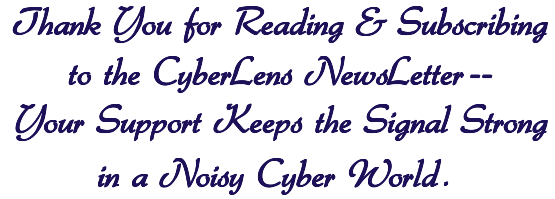- The CyberLens Newsletter
- Posts
- Embracing the Future: Hybrid Cryptographic Security Architecture
Embracing the Future: Hybrid Cryptographic Security Architecture
A Forward-Looking Strategy to Safeguard Against Quantum Threats

Learn AI in 5 minutes a day
What’s the secret to staying ahead of the curve in the world of AI? Information. Luckily, you can join 1,000,000+ early adopters reading The Rundown AI — the free newsletter that makes you smarter on AI with just a 5-minute read per day.

Interesting Tech Fact:
In the early 16th century, cryptography took an unexpected leap forward when Johannes Trithemius, a German abbot and scholar, created the Steganographia—a book disguised as a treatise on angelic magic but secretly containing one of the earliest known systematic methods for hidden communication. While the text appeared to be mystical incantations, it actually encoded complex polyalphabetic ciphers centuries before such methods became mainstream. For over 100 years, scholars debated whether it was occult or scientific, and it wasn’t until the 17th century that its cryptographic genius was fully recognized—making it a rare historical intersection of secrecy, science, and subterfuge that still fascinates modern encryption experts.
Introduction
Today, we are examining the world of hybrid cryptographic security architecture—a pivotal innovation at the intersection of classical encryption and post‑quantum cryptography (PQC). With quantum computing advancing rapidly, organizations face a growing risk of “harvest now, decrypt later” attacks, where encrypted data collected today can be decrypted in the future once quantum machines crack RSA or ECC. Hybrid cryptography signals a proactive bridge—a robust defense combining the best of both classical and quantum-resistant worlds.

What Is a Hybrid Cryptographic Security Architecture?
Hybrid cryptographic architecture merges established classical encryption techniques (like RSA or ECC) with quantum-resistant algorithms (e.g. NTRU, CRYSTALS‑Kyber, DILITHIUM or SPHINCS+, recently standardized by NIST). In practice, systems encrypt data or authenticate sessions with both classical and PQC methods simultaneously. Even if quantum computers eventually break classical cryptosystems, the PQC layer ensures security remains intact. Conversely, if PQC algorithms reveal unforeseen weaknesses, the classical fallback still provides protection.
This dual‑algorithm approach is an essential intermediate step in the industry-wide transition toward fully quantum-safe systems. It allows backward compatibility while future-proofing critical assets. Apple’s iMessage PQ3 protocol, for instance, is already using hybrid signing—combining elliptic‑curve cryptography with Kyber—to guard against forthcoming quantum threats.
Implementation and Usage
How It’s Used and Made Real
Hybrid systems deploy both classical and PQC key exchanges or signatures. Examples include:
TLS sessions that perform ECC-based key exchange and a lattice‑based PQC key exchange (e.g., CRYSTALS‑Kyber) together.
Digital certificates that carry dual signatures: one classical (RSA/ECC) and one post‑quantum.
Additional implementations include quantum key distribution (QKD) combined with PQC in hybrid frameworks, especially in high-assurance deployments like critical infrastructure or IoT systems. This allows organizations to gradually migrate encryption, maintain interoperability, and still leverage existing PKI systems.

Benefits of Hybrid Architecture for Organizations
Using a hybrid model offers numerous strategic and operational advantages:
Dual-layer resilience: Should classical cryptography fail to quantum attacks or PQC surface unexpected flaws, one layer continues safeguarding data
Agility and future-proofing: Easily replace or update individual components—thanks to modular design—without overhauling the entire architecture. FPGAs and crypto-agile HSMs support this adaptability.
Regulatory readiness: With NIST rolling out new PQC standards and agencies recommending migrations by 2035, hybrid solutions enable compliance trajectories while infrastructure catches up.
When Should Organizations Deploy Hybrid Encryption?
High-value or long‑lifespan data (e.g. financial, healthcare, government): Data encrypted today could still be sensitive decades later—making “harvest-now” threats real.
Transitioning environments: Hybrid models are ideal during phased migrations, enabling compatibility with legacy clients while supporting PQC-enabled endpoints.
Critical infrastructure: Sectors requiring maximal security—energy, telecoms, national infrastructure, IoT deployments—benefit most from hybrid quantum‑classical frameworks.

Best Practices for Implementing a Hybrid Architecture
Risk‑adjusted deployment
Assess data sensitivity and lifespan to prioritize where hybrid encryption is most urgently needed. Begin with critical systems and expand over time.Implement dual-signature or dual‑key exchange constructs
For example:
TLS implementations using ECC + Kyber key exchange.
Certificates signed using ECC and a PQC signature.
Keep both cryptosystems active simultaneously to provide fallback resilience.
Leverage cryptographic agility and modular hardware/software
Use platforms that support replacing algorithms and key protocols easily (FPGA‑based HSMs, crypto‑agile stacks).Rigorous implementation testing and standards compliance
Hybrid systems can be more complex—so proper configuration, thorough testing, and use of vetted libraries is vital. Even small mistakes can undermine the security of both layers.

In Summary
The hybrid cryptographic security architecture is a smart, forward-looking roadmap for enterprises striving to remain secure in a world of advancing quantum computing. Blending classical algorithms with PQC, it offers backward compatibility, operational flexibility, and strong defenses against both current and future threats.
As quantum readiness becomes not just a preparedness goal but a regulatory and strategic necessity, hybrid encryption represents a rational next step: a bridge to a quantum-safe future without sacrificing today’s infrastructure. Organizations that move early capture trust, reduce long-term migration complexity, and bolster resilience for years to come.
Why Hybrid?
Dual-layer security ensures protection even if one scheme breaks
Modular and agile for smooth transitions to full PQC
When to Use?
Protect high-value, long-term data
During phased upgrades or regulatory transition periods
By adopting a hybrid cryptographic security model, organizations gain not just protection—but technological confidence for the quantum age.

Final Thought
In a digital era where tomorrow’s threats are already in the making, staying ahead isn’t just smart—it’s survival. Hybrid cryptographic security architecture is more than an upgrade; it’s a strategic shield for the quantum age. If this glimpse into the future of encryption has sparked your curiosity, imagine what else you could uncover.

Want more cutting-edge cybersecurity insights? Stay Sharp—Subscribe to The CyberLens Newsletter.






